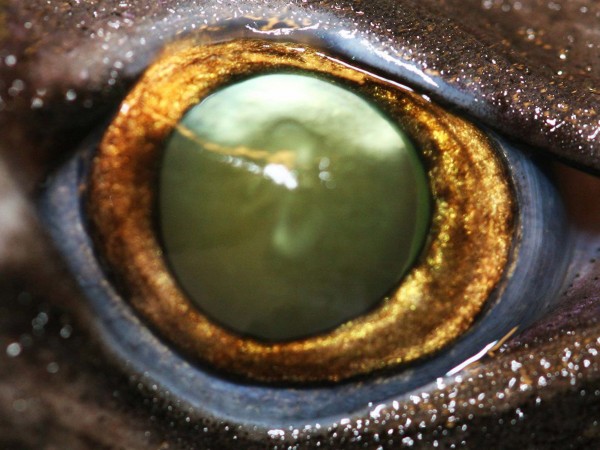There are species of shark that are bioluminescent and have evolved ocular structures designed to detect faint light patterns in the deep ocean produced by other bioluminescent sharks that live at depths from 600 to 3,000 feet in the mesopelagic zone where very little sunlight reaches.
These eyes as expected, have visual adaptations optimized for this environment. Julien Claes, the lead authors of a new study notes that “There are about 50 different shark species that are able to produce light”. Given that there are 50 separate bioluminescent species of shark, one might expect some visual system specializations and indeed there are. Everything from higher rod densities to descriptions of bioluminescent specializations used for communication and specialized transparencies in the upper socket of the eye to help adjust illumination.
The authors of this study, Julien M. Claes, Julian C. Partridge, Nathan S. Hart, Eduardo Garza-Gisholt, Hsuan-Ching Ho, Jérôme Mallefet and Shaun P. Collin used a number of approaches including from their abstract: “Light microscopy, stereology-assisted retinal topographic mapping, spectrophotometry and microspectrophotometry to investigate the visual ecology of deep-sea bioluminescent sharks [four etmopterid species (Etmopterus lucifer,E. splendidus, E. spinax and Trigonognathus kabeyai) and one dalatiid species (Squaliolus aliae)]. We highlighted a novel structure, a translucent area present in the upper eye orbit of Etmopteridae, which might be part of a reference system for counterillumination adjustment or acts as a spectral filter for camouflage breaking, as well as several ocular specialisations such as aphakic gaps and semicircular tapeta previously unknown in elasmobranchs. All species showed pure rod hexagonal mosaics with a high topographic diversity. Retinal specialisations, formed by shallow cell density gradients, may aid in prey detection and reflect lifestyle differences; pelagic species display areae centrales while benthopelagic and benthic species display wide and narrow horizontal streaks, respectively. One species (E. lucifer) displays two areae within its horizontal streak that likely allows detection of conspecifics’ elongated bioluminescent flank markings. Ganglion cell topography reveals less variation with all species showing a temporal area for acute frontal binocular vision. This area is dorsally extended in T. kabeyai, allowing this species to adjust the strike of its peculiar jaws in the ventro-frontal visual field. Etmopterus lucifer showed an additional nasal area matching a high rod density area. Peak spectral sensitivities of the rod visual pigments (λmax) fall within the range 484–491 nm, allowing these sharks to detect a high proportion of photons present in their habitat. Comparisons with previously published data reveal ocular differences between bioluminescent and non-bioluminescent deep-sea sharks. In particular, bioluminescent sharks possess higher rod densities, which might provide them with improved temporal resolution particularly useful for bioluminescent communication during social interactions.”
Personally, I would love to get my hands on just a tiny piece of well fixed (in glutaraldehyde) retinas from these sharks.
Image courtesy: Dr. J. Mallefet
